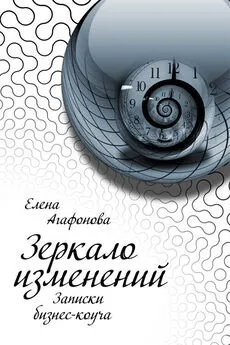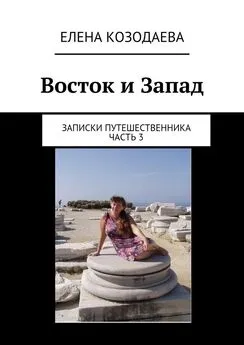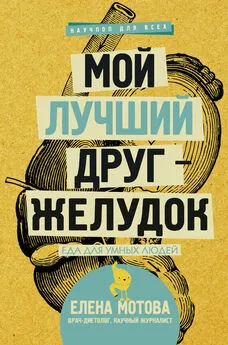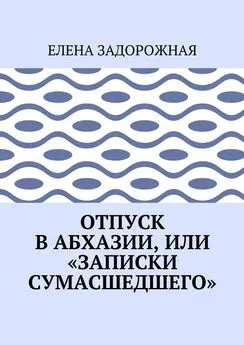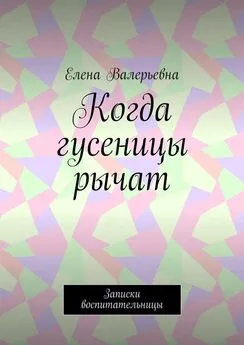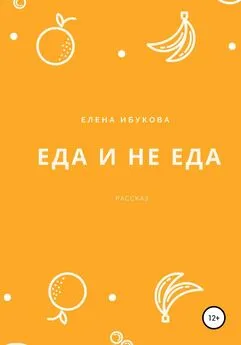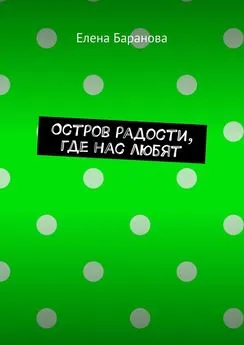Елена Мотова - Еда для радости. Записки диетолога
- Название:Еда для радости. Записки диетолога
- Автор:
- Жанр:
- Издательство:ООО «ЛитРес», www.litres.ru
- Год:2021
- ISBN:нет данных
- Рейтинг:
- Избранное:Добавить в избранное
-
Отзывы:
-
Ваша оценка:
Елена Мотова - Еда для радости. Записки диетолога краткое содержание
Еда для радости. Записки диетолога - читать онлайн бесплатно ознакомительный отрывок
Интервал:
Закладка:
39. Карпентер М. На кофеине. Полезная вредная привычка . М.: “Манн, Иванов и Фербер”, 2015.
40. About the Caffeine Molecule – Chemical and Physical Properties. Science of Cooking ( https://www.scienceofcooking.com/caffeine.htm).
41. Ames B. N., Profet M., Gold L. S. Dietary pesticides (99.99 % all natural) . PNAS. 1990; 87(19): 7777-7781.
42. van Dam R. M., Hu F. B., Willett W. C. Coffee, Caffeine, and Health. The New England Journal of Medicine. 2020; 383: 369-378.
43. Giardina E.-G. Cardiovascular effects of caffeine and caffeinated beverages. UpTo-Date. 2020 ( https://www.uptodate.com/contents/cardiovascular-effects-of-caffeine-and-caffeinated-beverages).
44. Spilling the Beans: How Much Caffeine is Too Much? FDA. 2018 ( https://www.fda.gov/consumers/consumer-updates/spilling-beans-how-much-caffeine-too-much).
45. Chin J. M., Merves M. L., Goldberger B. A., Sampson-Cone A., Cone E. J. Caffeine Content of Brewed Teas. Journal of Analytical Toxicology. 2008; 32(8): 702-704.
46. Scientific Opinion on the safety of caffeine. EFSA Journal. 2015; 13(5): 4102.
47. Wolk B. J., Ganetsky M., Babu K. M. Toxicity of energy drinks. Current Opinion in Pediatrics. 2012; 24(2): 243-251.
48. Schneider M. B., Benjamin H. J., Bhatia J. J. S. et al. Sports drinks and energy drinks for children and adolescents: Are they appropriate? Pediatrics. 2011; 127: 1182-1189.
Часть четвертая. Пить или не пить? Глава 15. Мифы о спиртном Что такое алкоголь?
1. Словарь терминов, относящихся к алкоголю, наркотикам и другим психоактивным средствам. Женева: ВОЗ, 1994 ( https://apps.who.int/iris/bitstream/handle/10665/39461/9241544686_rus.pdf).
2. Cederbaum A. I. Alcohol metabolism. Clinics in liver disease. 2012; 16(4): 667-685.
3. Alcohol Metabolism: An Update. The National Institute on Alcohol Abuse and Alcoholism. 2007 ( https://pubs.niaaa.nih.gov/publications/aa72/aa72.htm). – Дополнительная информация о метаболизме алкоголя и последствиях его употребления для здоровья.
4. What are the effects of alcohol? Australian Government Department of Health. 2020 ( https://www.health.gov.au/health-topics/alcohol/about-alcohol/what-are-the-effects-of-alcohol).
5. Mukamal K. J. Overview of the risks and benefits of alcohol consumption. UpToDate. 2020 ( https://www.uptodate.com/contents/overview-of-the-risks-and-benefits-of-alcohol-consumption).
6. Møller L. Q amp;A – How can I drink alcohol safely? WHO ( http://www.euro.who.int/en/health-topics/disease-prevention/alcohol-use/data-and-statistics/q-and-a-how-can-i-drink-alcohol-safely).
7. Limit alcohol consumption. World Cancer Research Fund International ( https://www.wcrf.org/dietandcancer/recommendations/limit-alcohol-consumption).
Один дринк, два дринка, три дринка
8. Standard drinks guide. Australian Government Department of Health. 2019 ( https://www.health.gov.au/health-topics/alcohol/about-alcohol/standard-drinks-guide).
9. What’s In Your Drink? DRINKiQ ( https://www.drinkiq.com/en-ca/whats-in-your-drink/). – Дополнительная информация о том, сколько алкоголя содержится в том или ином напитке.
10. How much alcohol is safe to drink? Australian Government Department of Health. 2020 ( https://www.health.gov.au/health-topics/alcohol/about-alcohol/how-much-alcohol-is-safe-to-drink).
11. Tetrault J. M., O’Connor P. G. Risky drinking and alcohol use disorder: Epidemiology, pathogenesis, clinical manifestations, course, assessment, and diagnosis . UpToDate. 2020 ( https://www.uptodate.com/contents/risky-drinking-and-alcohol-use-disorder-epidemiology-pathogenesis-clinical-manifestations-course-assessment-and-diagnosis).
12. Официальные данные и статистика по тяжелому эпизодическому пьянству в ЕС. ВОЗ ( http://www.euro.who.int/ru/health-topics/disease-prevention/alcohol-use/data-and-statistics).
13. Alcohol Metabolism: An Update. The National Institute on Alcohol Abuse and Alcoholism. 2007 ( https://pubs.niaaa.nih.gov/publications/aa72/aa72.htm).
14. Preventing violence by reducing the availability and harmful use of alcohol. WHO. 2009 ( https://www.who.int/violence_injury_prevention/violence/alcohol.pdf).
15. Вы слишком много пьете? Оцените свое потребление алкоголя с помощью теста AUDIT. ВОЗ ( http://www.euro.who.int/ru/health-topics/disease-prevention/alcohol-use/data-and-statistics/q-and-a-how-can-i-drink-alcohol-safely/do-you-drink-too-much-test-your-own-alcohol-consumption-with-the-audit-test).
“Пьяной горечью Фалерна…”
16. Valverde M. New research says drinking wine is more important than exercise for living past 90. Politifact. 2019 ( https://www.politifact.com/factchecks/2019/feb/01/blog-posting/no-study-doesnt-say-drinking-wine-more-important-e/).
17. Degenhardt L., Charlson F., Ferrari A. et al. The global burden of disease attributable to alcohol and drug use in 195 countries and territories, 1990-2016: a systematic analysis for the Global Burden of Disease Study 2016. The Lancet. Psychiatry. 2018; 5(12): 987-1012.
18. Shmerling R. H. Alcohol and your health: Is none better than a little? Harvard Medical School. 2018 ( https://www.health.harvard.edu/blog/alcohol-and-your-health-is-none-better-than-a-little-2018091914796).
19. Wannamethee G., Shaper A. G. Men who do not drink: a report from the British Regional Heart Study. International Journal of Epidemiology. 1988; 17(2): 307-316.
20. Stockwell T., Zhao J., Panwar S., Roemer A., Naimi T., Chikritzhs T. Do “Moderate” Drinkers Have Reduced Mortality Risk? A Systematic Review and Meta-Analysis of Alcohol Consumption and All-Cause Mortality. Journal of studies on alcohol and drugs. 2016; 77(2): 185-198.
Средство от похмелья и другие мифы
21. Cox D. Everything you ever wanted to know about hangovers (but were too queasy to ask). The Guardian. 2016 ( https://www.theguardian.com/lifeandstyle/2016/dec/12/everything-you-wanted-to-know-about-hangovers).
22. Hangovers. Symptoms and causes. Mayo Clinic. 2017 ( https://www.mayoclinic.org/diseases-conditions/hangovers/symptoms-causes/syc-20373012).
23. Hangovers. Diagnosis and treatment. Mayo Clinic. 2017 ( https://www.mayoclinic.org/diseases-conditions/hangovers/symptoms-causes/syc-20373012).
24. Sizer F., Whitney E. Nutrition: Concepts and Controversies (13th ed.). Brooks Cole, 2013.
Глава 16. Губит людей вода Водное равновесие
1. Paque C. Water consumption in Saharan nomads. A remarkably reduced and constant consumption. La Nouvelle Presse Medicale. 1976; 5(32): 2087-2090.
2. Recommended Dietary Allowances. Reprint and Circular Series of the National Research Council. 1945; 122: 3-18.
3. Гайтон А., Холл Дж. Медицинская физиология. М: “Логосфера”, 2008.
4. Armstrong L. E., Johnson E. C. Water Intake, Water Balance, and the Elusive Daily Water Requirement. Nutrients. 2018; 10(12): 1928.
5. Picco M. F. Nutrition and healthy eating. Does drinking water during or after a meal disturb digestion? Mayo Clinic. 2018 ( https://www.mayoclinic.org/healthy-lifestyle/nutrition-and-healthy-eating/expert-answers/digestion/faq-20058348).
Сколько нужно пить?
6. Hydration Calculator. Hydration for health. 2018 ( https://www.hydrationforhealth.com/en/hydration-tools/hydration-calculator/).
7. Valtin H. “Drink at least eight glasses of water a day.” Really? Is there scientifiс evidence for “8 x 8”? American Journal of Physiology – Regulatory, Integrative and Comparative Physiology. 2002; 283(5): R993-R1004.
8. Sterns R. H. Etiology and evaluation of hypernatremia in adults. UpToDate. 2020 ( https://www.uptodate.com/contents/healthy-diet-in-adults#H24).
9. Stachenfeld N. S., DiPietro L., Nadel E. R., Mack G. W. Mechanism of attenuated thirst in aging: role of central volume receptors. The American Journal of Physiology. 1997; 272(1 Pt 2): R148-R157.
10. Urine color. Mayo Clinic. 2017 ( https://www.mayoclinic.org/diseases-conditions/urine-color/symptoms-causes/syc-20367333).
Пытки водой отменяются
11. Dietary Reference Intakes for Water, Potassium, Sodium, Chloride, and Sulfate. Washington, DC: The National Academies Press, 2005.
12. Rosner M. H., Hew-Butler T. Exercise-associated hyponatremia. UpToDate. 2020 ( https://www.uptodate.com/contents/exercise-associated-hyponatremia).
13. Sharma S. London Marathon Medical Advice. London marathon events. 2019 ( https://www.virginmoneylondonmarathon.com/en-gb/final-instructions/medical-advice/).
14. Lee L. C., Noronha M. When plenty is too much: water intoxication in a patient with a simple urinary tract infection. BMJ case reports. 2016; bcr2016216882.
15. Wolf R., Wolf D., Rudikof D., Parish L. Nutrition and water: drinking eight glasses of water a day ensures proper skin hydration – myth or reality? Clinics in Dermatology. 2010; 28(4): 380-383.
16. Williams S., Krueger N., Davids M. et al. Effect of fluid intake on skin physiology: distinct differences between drinking mineral water and tap water. International Journal of Cosmetic Science. 2007; 29(2): 131-138.
17. Buschmann M., Steiniger J., Hille U. et al. Water-Induced Thermogenesis. Journal of Clinical Endocrinology and Metabolism. 2003; 88(12): 6015-6019.
18. Perreault L., Apovian C. Obesity in adults: Overview of management. UpTo-Date. 2020 ( https://www.uptodate.com/contents/obesity-in-adults-overview-of-management).
19. What is energy density? British Nutrition Foundation. 2018 ( https://www.nutrition.org.uk/healthyliving/fuller/what-is-energy-density.html). – Дополнительная информация об энергетической плотности продуктов и блюд.
20. Bertrais S., Galan P., Renault N. et al. Consumption of soup and nutritional intake in French adults: Consequences for nutritional status. Journal of Human Nutrition and Dietetics. 2001; 14(2): 121-128.
21. Zhu Y., Hollis J. Soup consumption is associated with a lower dietary energy density and a better diet quality in US adults. British Journal of Nutrition. 2014; 111(8): 1474-1480.
22. Rethink Your Drink. CDC. 2015 ( https://www.cdc.gov/healthyweight/healthy_eating/drinks.html).
Глава 17. Витамания Осенний (зимний, весенний) авитаминоз. (Спойлер: вряд ли.)
1. Dr. Derek Muller – Presenter. Vitamania ( https://www.vitamaniathemovie.com/derek-muller/). – Дополнительная информация об австралийском научном журналисте Дереке Мюллере, авторе документального фильма “Витамания”.
Читать дальшеИнтервал:
Закладка:

